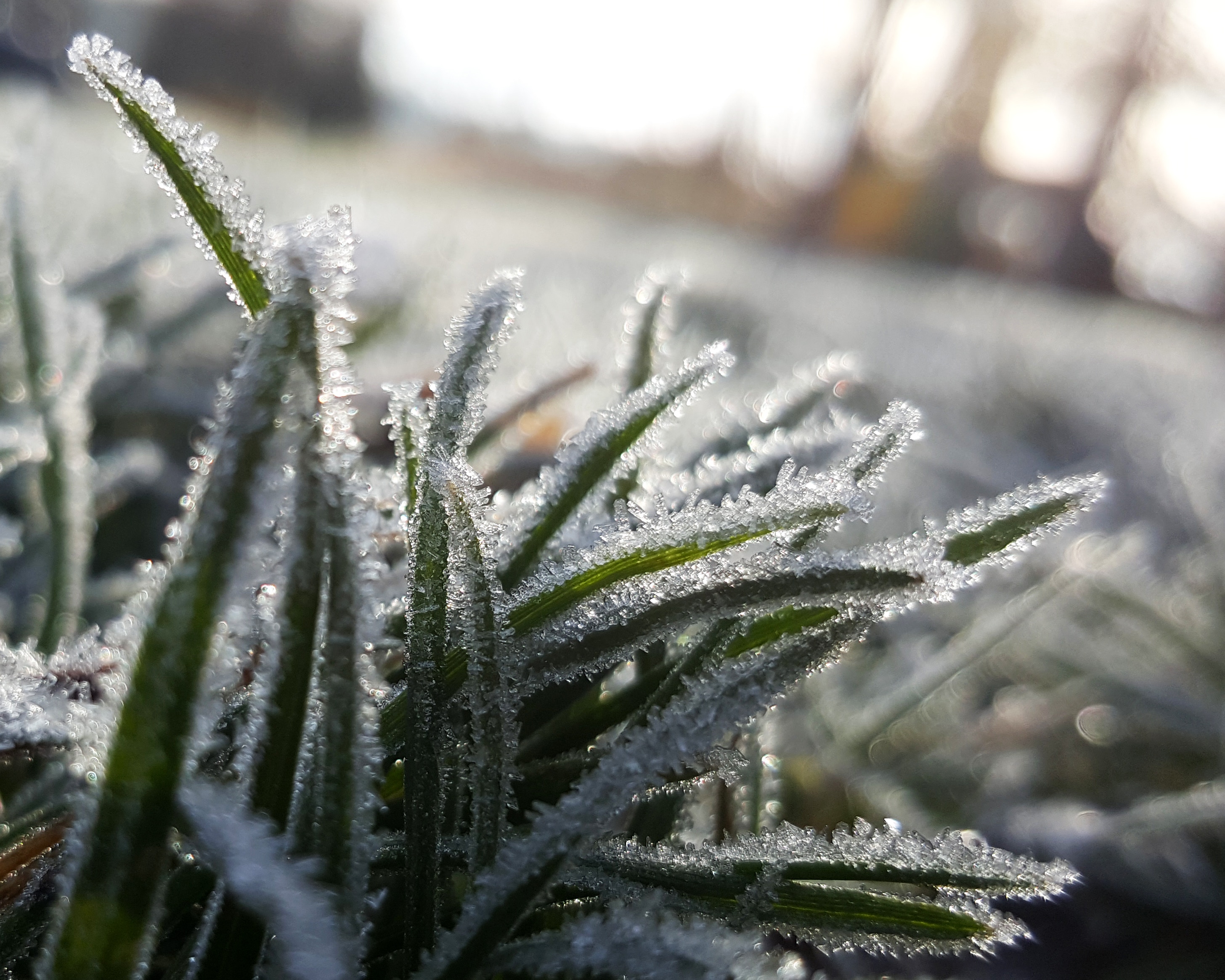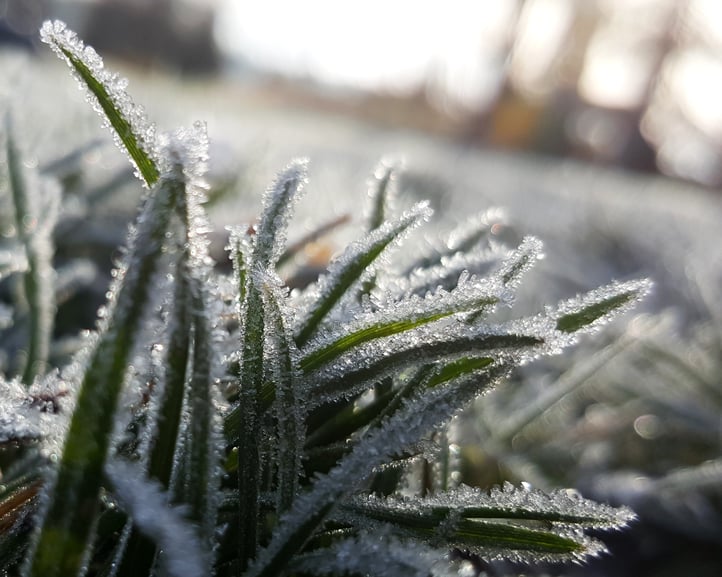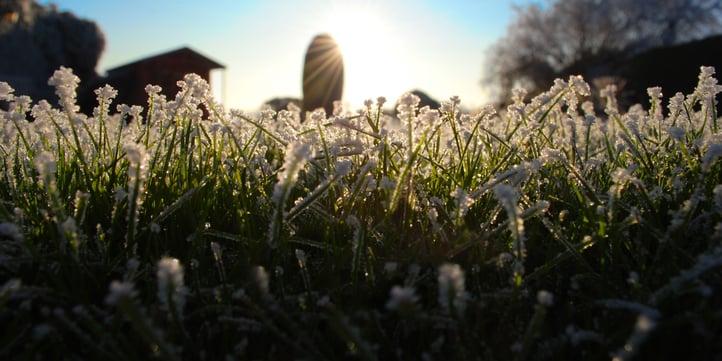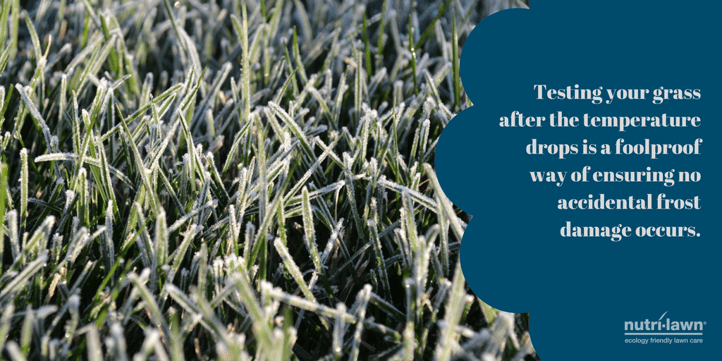By: Shawn Karn, The Grass Expert on Nov 30, 2017 8:57:12 AM


Don't look now folks, but December is right around the corner. That means the days are growing shorter, the air is getting colder, and frost is starting to appear on our lawns. Lucky us, right?
Depending on where you live in Canada, you've probably started to notice some silver frost blanketing your grass and gardens in the early morning.
While it may be pleasing to the eye, frost can actually be a real problem for your lawn if not properly monitored.
Here are some tips for avoiding frost damage on your lawn
While many theories exist about how frost damages living tissue, the most common belief is that ice crystals damage and kill plant cells when they are forced into the leaf by the weight of a foot or by other means of traffic across a lawn.
RELATED > Everything You Need to Know About Your Last Mow
For frost to properly form on grass, many people believe that the temperature must fall to 32°F. However, frost can occur in low lying shaded areas even when the official temperature is above 38°F, so you need to be careful depending on where you live in Canada.
Even if it's not freezing cold outside, frost can still affect your lawn.
Walking over a lawn that is frost covered can cause significant and unsightly damage to the turf. Damage first appears as a blackening of the leaves, which gradually turns to a brown or tan colour. Sounds like a heck of an eyesore to me!
Don’t let this happen to your turf, folks. If and when it does get cold enough for frost, be sure to stay off of your frosted grass until the sun melts the frost away.

Testing your grass after the temperature drops is a foolproof way of ensuring that no accidental frost damage occurs.
A quick test to determine whether it is safe to walk on the grass is to simply take your hand and wipe it parallel along the surface (tips) of the turf. If your hand stays dry throughout the duration of the test, it is still too soon to walk on the turf. If your hand is wet, then the frost has started to melt and it is safe to walk on.

Follow us on Facebook for more lawn care tips & tricks.